Bologna, Museo Ottocento opens: a new museum on Bolognese painting of the 1800s and 1900s
The Museo Ottocento, a new institution dedicated to nineteenth- and twentieth-century Bolognese painting, is born in Bologna. It will be located in Piazza San Michele on Strada Maggiore, an axis that connects the International Museum and Library of Music, the Davia Bargellini Museum, Casa Morandi and the Museo Civico del Risorgimento, and will enrich the city’s exhibition itinerary dedicated to the nineteenth and twentieth centuries.
The new museum will be officially inaugurated on Thursday, April 20 at 6 p.m. and will consist of 12 exhibition sections with a permanent collection of 85 works divided by thematic nuclei, including oil paintings, watercolors, drawings and sketches, documenting the main stylistic currents of the “long century” as seen by artists from the Bologna area. Museo Ottocento Bologna, sponsored by the Municipality of Bologna, is part of a nationwide project with the aim of dialoguing with major Italian institutions, joining museums already established ones such as Museo Giovanni Boldini and Museo dell’Ottocento in Ferrara, Museo Civico Giovanni Fattori in Livorno, Museo Revoltella in Trieste, GAM - Galleria d’Arte Moderna in Milan, Divisionism Pinacoteca Fondazione Cassa di Risparmio in Tortona, established in 2001, and the recently opened Museo dell’Ottocento Fondazione Di Persio-Pallotta in Pescara.
In addition to the permanent collection, Museo Ottocento Bologna will organize meetings open to the public, conferences, study days and temporary exhibitions. Thanks to the already acquired Fabio Fabbi Archives and Emilio Oliviero Contini Archives, Museo Ottocento Bologna will not only be an exhibition venue but also a research center. It will welcome graduate students and organize studies on the collections it holds. Each year, a scholarship will be awarded from the Museum’s income to scholars in the field to promote its activities and research. The Museum, which is a non-profit organization, will pursue civic, solidarity and socially useful purposes, and its main objective will be to protect, preserve, enhance and promote artistic, book and archival funds and any other testimonies on the activity of artists, especially from the Bologna area, born between the 19th and 20th centuries and belonging to the artistic currents that expressed themselves between the 19th and 20th centuries. The Museum will activate training internships with the University of Bologna to raise awareness of Bologna’s 19th- and 20th-century artistic heritage. Finally, the Friends of the Museo Ottocento Bologna initiative will enable interested parties to support the institution’s artistic activities and cultural programs.
The exhibition itinerary of the Museo Ottocento Bologna begins around the middle of the century, plumbing the artistic developments of the area through works by Bolognese artists such as Giovanni Paolo Bedini, Luigi Busi, Fabio Fabbi, Mario De Maria, Alfredo Protti and many others. Painting of history and academic settings is well represented by Andrea Besteghi ’s (1817-1869) painting Cimabue and Giotto, exhibited at the first edition of the Expositions of the Protecting Society of Fine Arts, which illustrates the famous meeting between the two great artists. We move on to the taste for “Pompeian painting,” so widespread at the time, which found its admirable interpreter in Luigi Bazzani (1836-1927): the artist visited Pompeii and is still famous for his watercolors. On display are two fine oil paintings by the author: Il foro a Pompei, a romantic scene with a couple strolling and the ever-present smoking Vesuvius in the background, and Figura pompeiana, characterized by a mischievous sensualism.
The tour continues with a hint of the period’s fashion for eighteenth-century-inspired scenes, popularized by French dealer Adolphe Goupil. This tendency to look to the past with the eye of the collector can be well summed up by the work of two artists such as Alfonso Savini (1836- 1908) and Giovanni Paolo Bedini (1844-1924), artists who often portrayed characters “in costume.” Examples are the Drinker or Bedini’s La veste nuova, a painting, the latter, exhibited at the exhibition of the Protecting Society of Fine Arts in 1873, or La serenata, Savini’s masterpiece.
From history painting to representation from life: the Bolognese protagonists of this turning point were Luigi Busi (1837-1884), Raffaele Faccioli (1845-1916) and Luigi Serra (1846-1888), whose emblematic works are presented. There are Busi’s two previously unpublished masterpieces, The Page and the Duchess, exhibited at the Protecting Society of Fine Arts in 1862, which features an aristocratic woman in an interior enriched with surprising details: an ivory vase with an elephant bas-relief, bouquets of flowers, budgerigars... or the watercolor of The Motherly Joys, a sketch of the famous painting of the same name that made Busi known far beyond regional borders. Busi’s fraternal friend, and his companion during his Roman period, was Raffaele Faccioli, whose Concerie in via Capo di Lucca, a painting imbued with fun and irony, is exhibited. The section closes with a rare oil painting by Luigi Serra, whose collection of forty-seven drawings the Museum keeps, moreover, to document the artist’s production.
In the wake of an unprecedented interest in Naturalism, coeval with that of the Tuscan Macchiaioli, Coriolano Vighi (1845-1905), Alessandro Scorzoni (1858-1933) and above all Luigi Bertelli (1833-1916), a native of San Lazzaro, who, as a self-taught artist, revolutionized Bolognese painting from then on, established themselves in Bologna. Coriolano Vighi never worked en plein air; his was a nature purely imagined and thought out within the studio. The section exhibits the impressive Landscape in oil and a delicate Landscape in pastel-a favorite technique of the artist-made in 1899. Vighi was also admired and known abroad, producing works even for the Czars of Russia. Alessandro Scorzoni, who lived in poverty, is featured with two central works in his production, Sul Greto del Savena of 1932 and La mia famiglia. Protagonist of the new way of feeling nature, however, was Luigi Bertelli, whose painting Alba in pineta is exhibited.
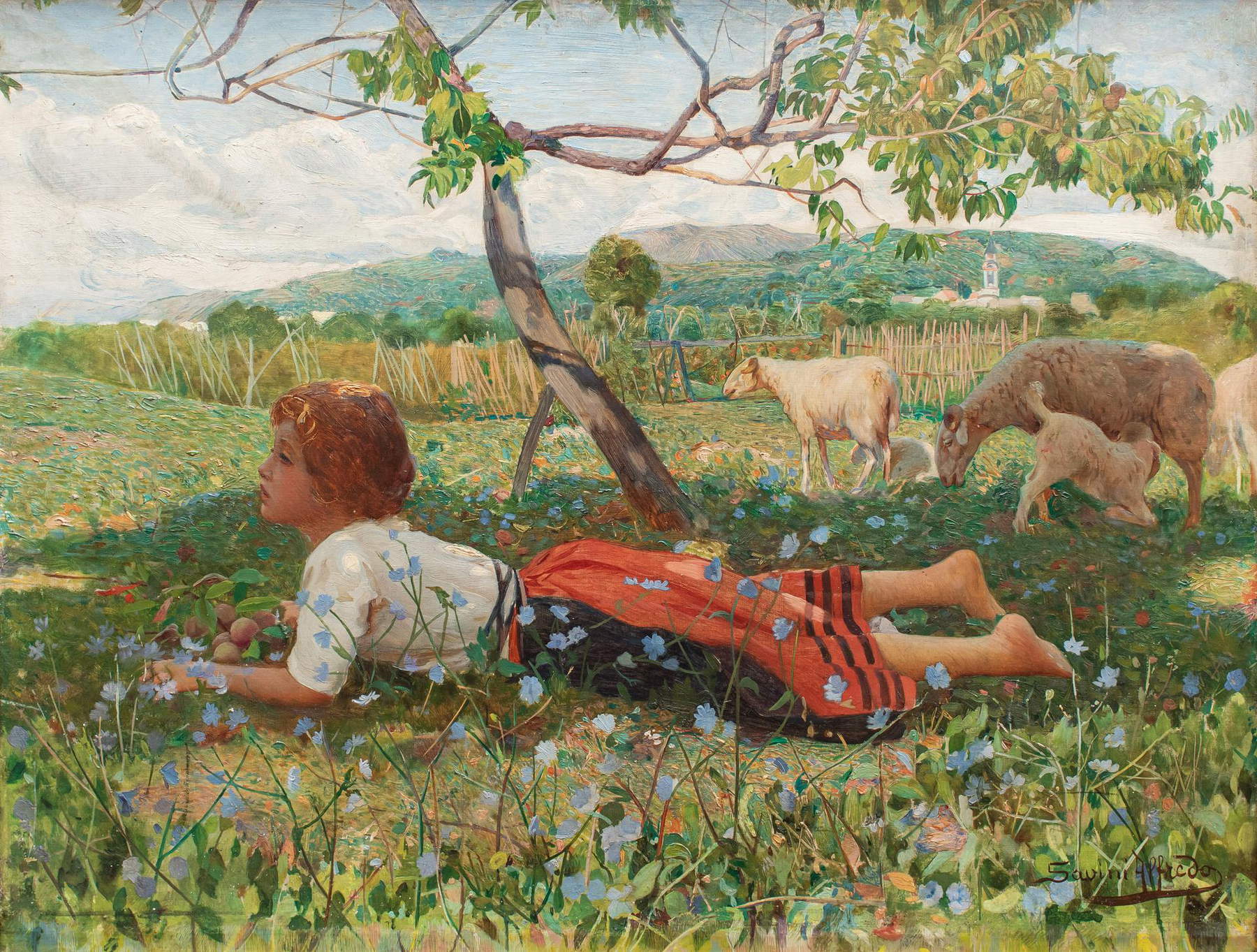
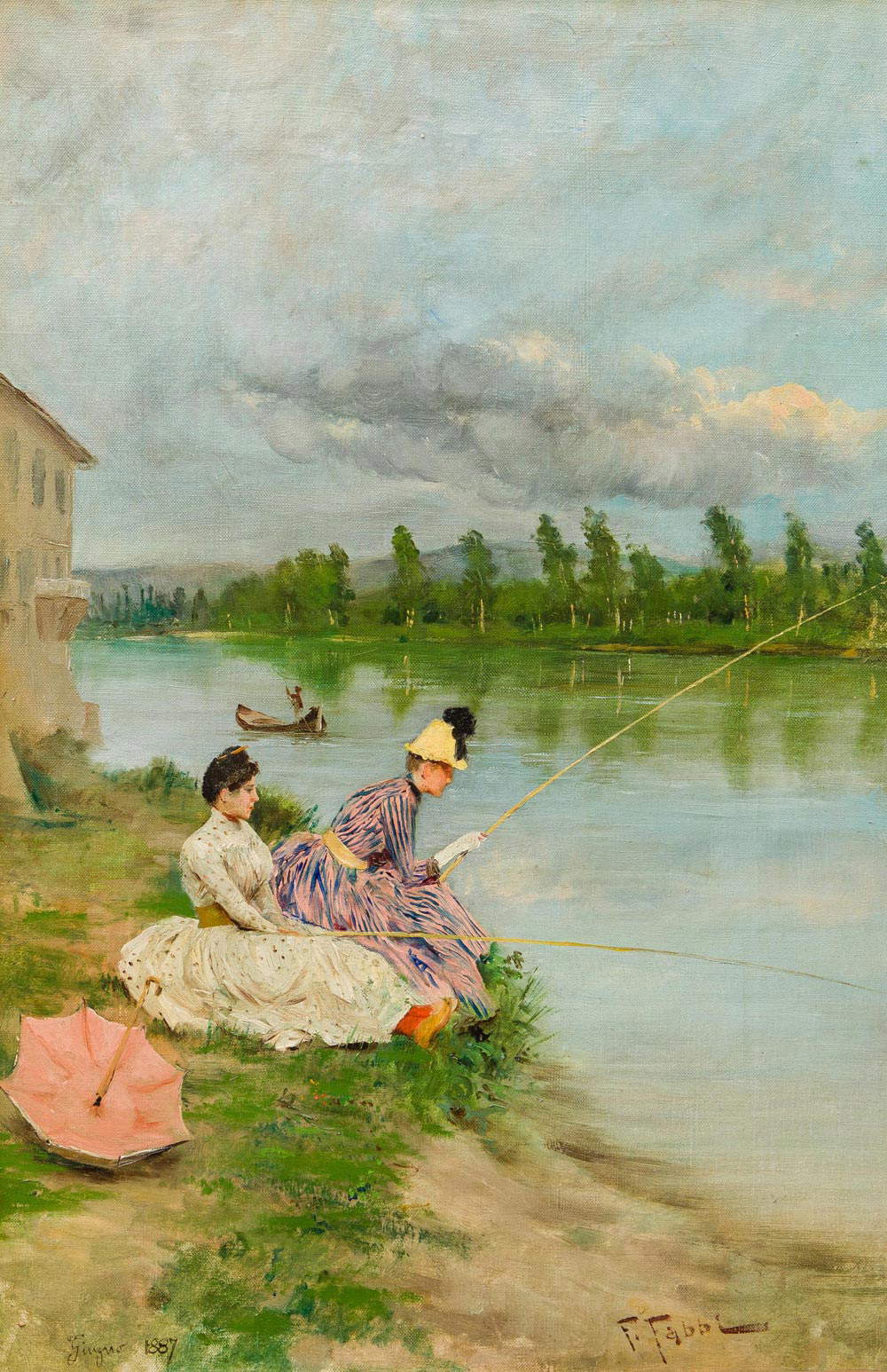
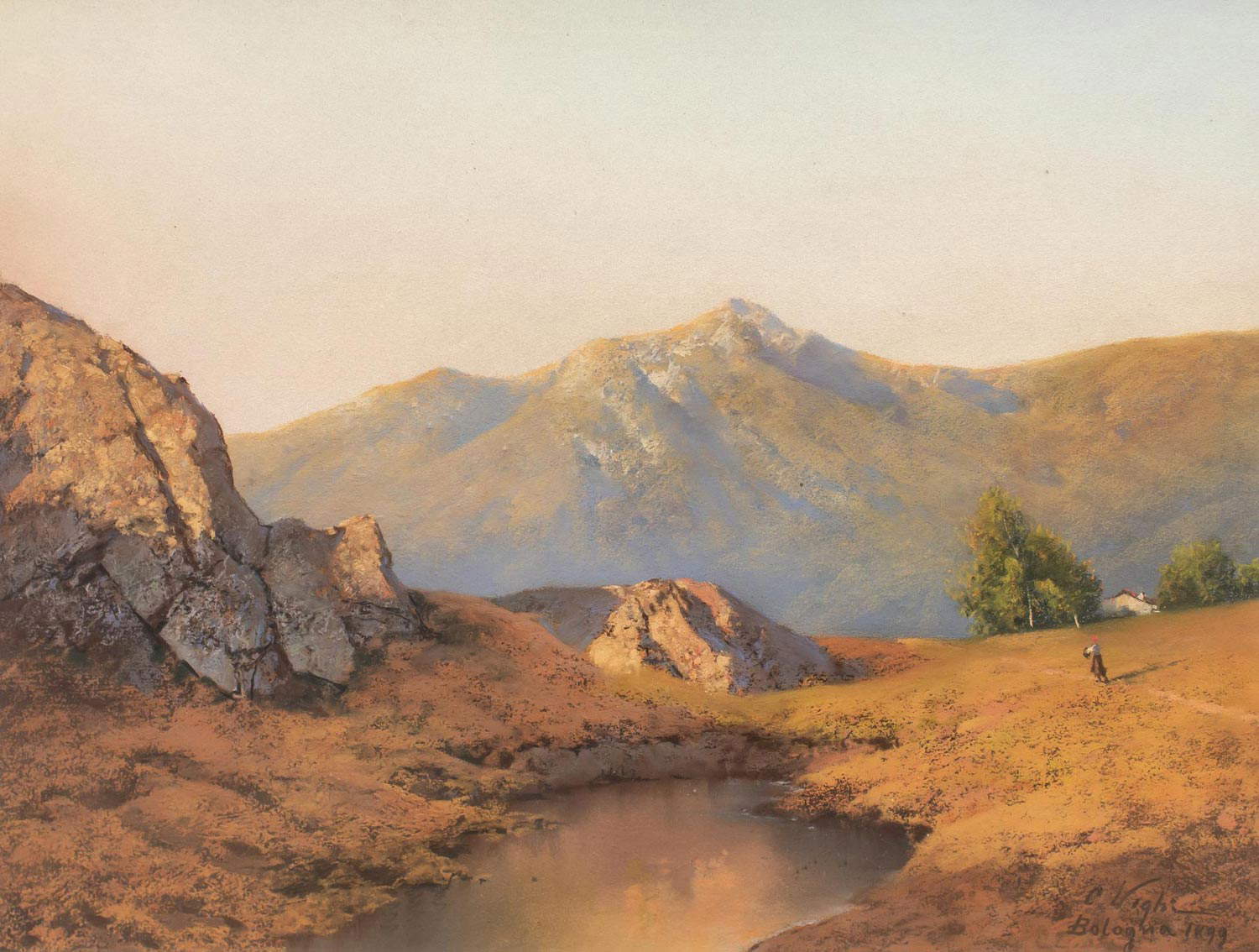
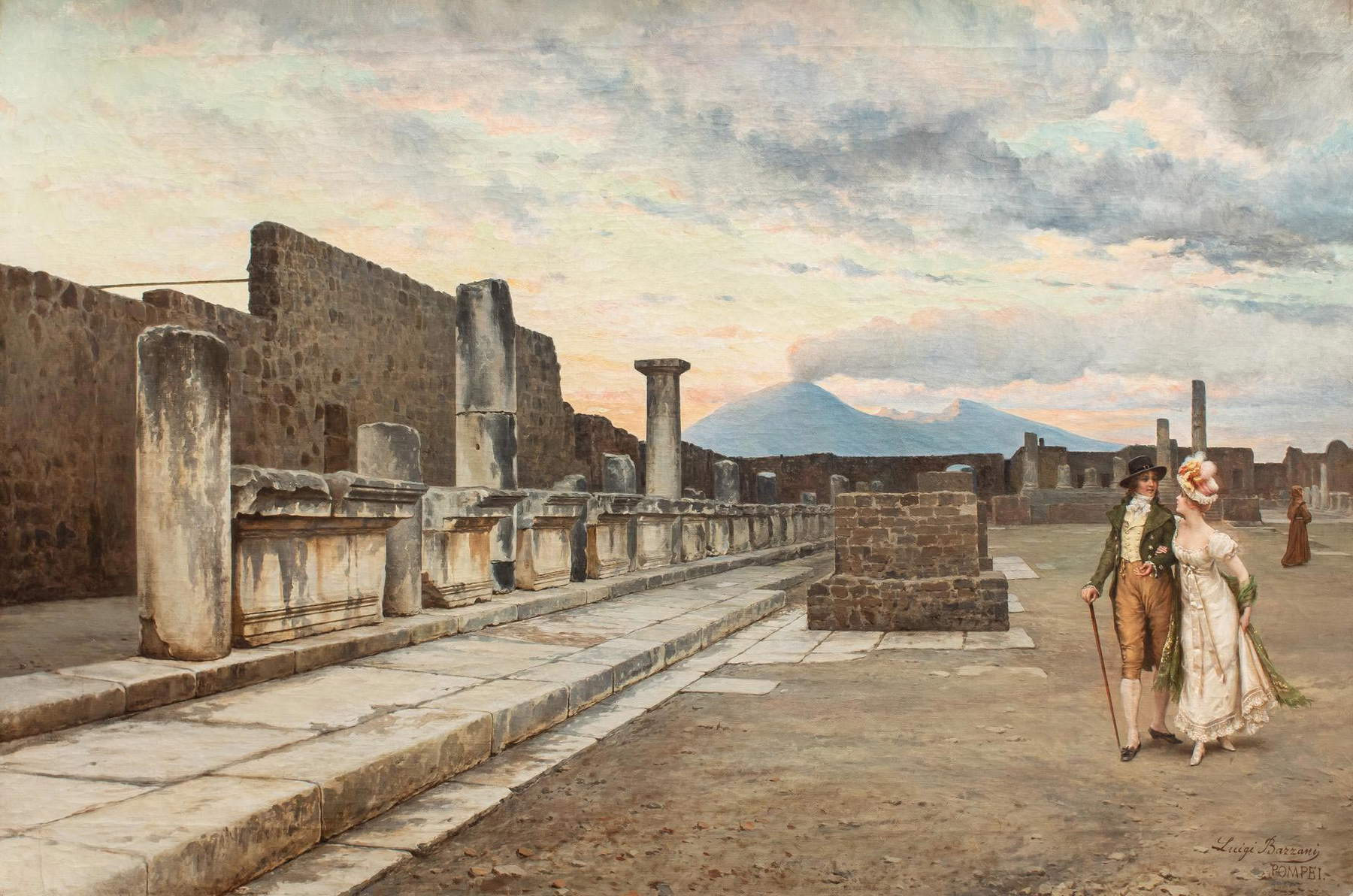
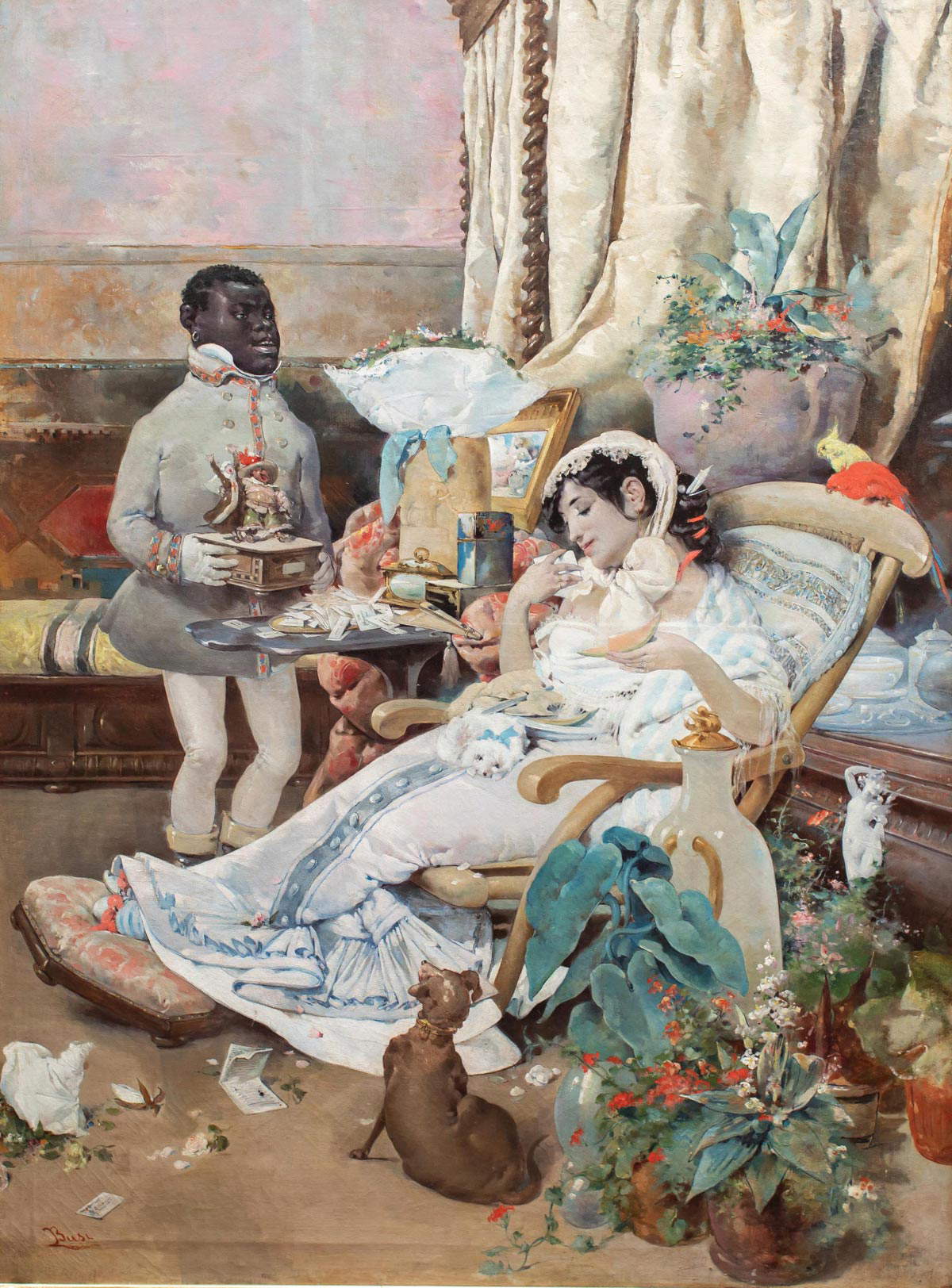
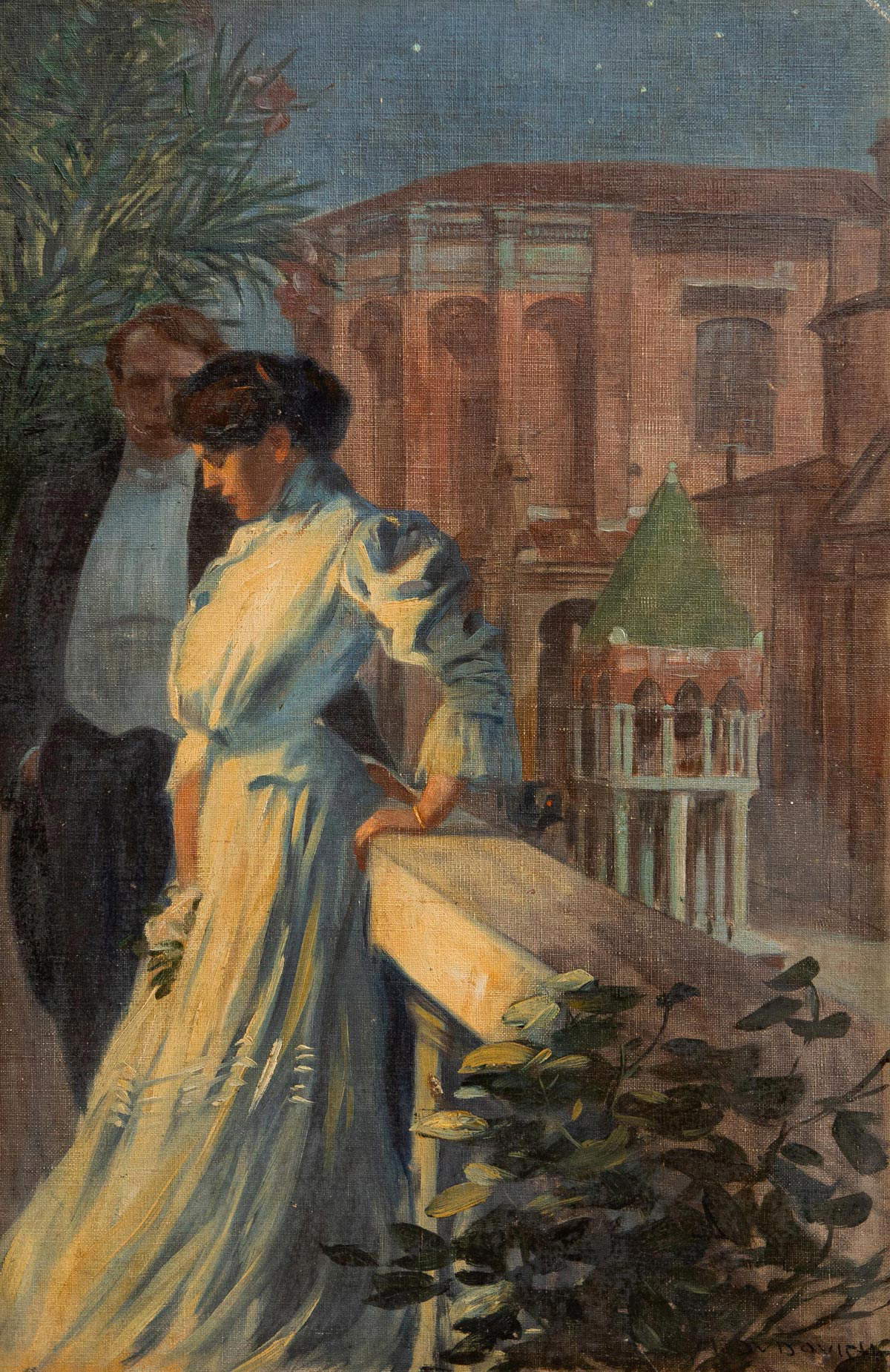
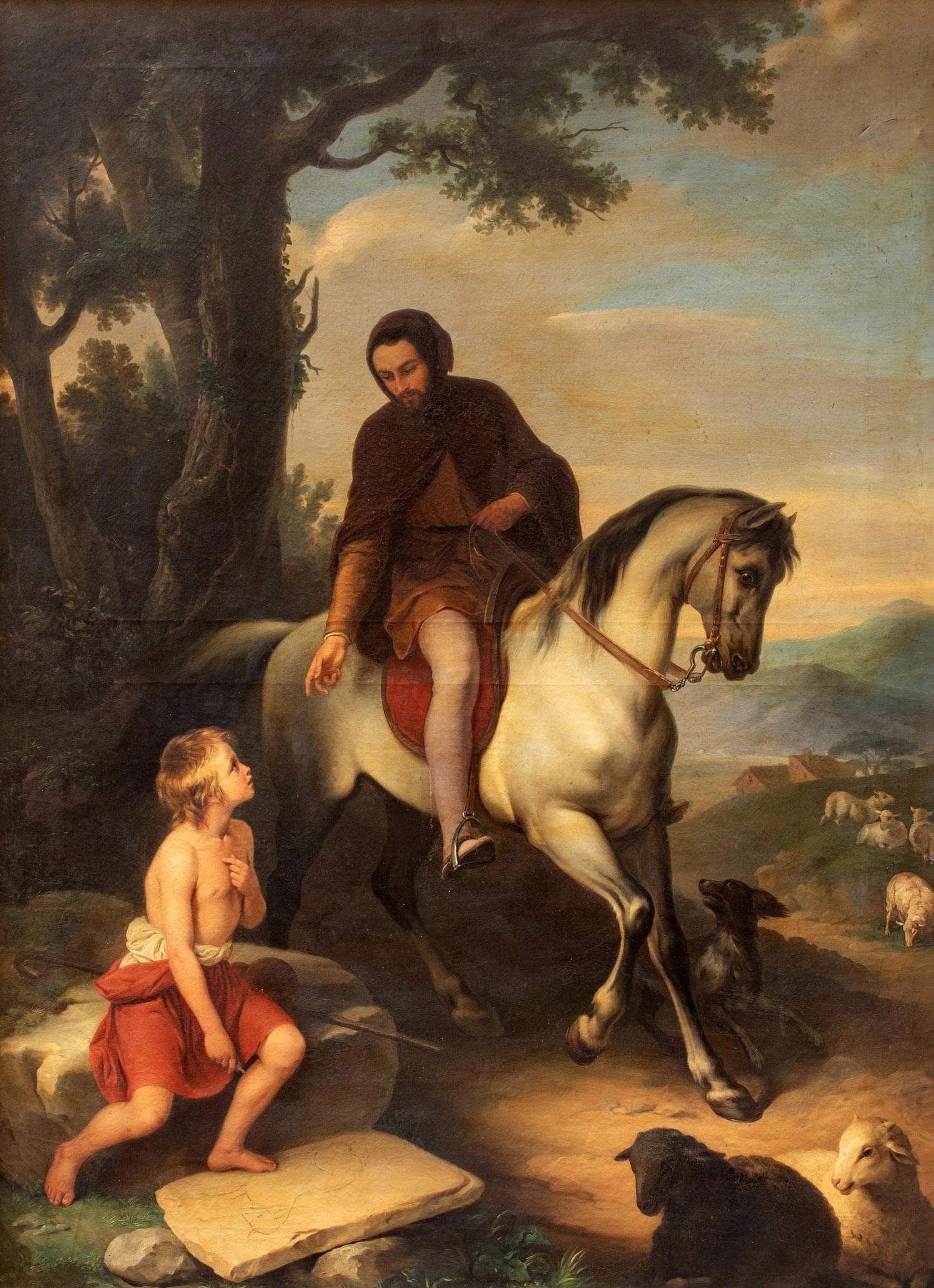
Approaching the end of the century (Fin de Siècle), with the maturation of new tastes and under the impetus of a powerful economic revival, artists such as Fabio Fabbi (1861-1945), the Budriese Augusto Majani (1867-1959), Alfredo Savini (1868-1924) and others emerged in Bologna. The section consists of numerous masterpieces that well illustrate the ease, possibilities and carefreeness of an era. Prominent among them is a “cameo”: the oil painting by the Triestine Marcello Dudovich (1878-1972), who portrayed himself in his studio opposite Piazza San Domenico with his future wife Elisa Bucchi. Another interesting theme is that of Orientalism, which had important echoes in both the decor and fashion of the time. Among the artists who well intercepted the trend were Alberto Pasini (1826-1899), Fausto Zonaro (1854-1929) and brothers Alberto (1858-1906) and Fabio Fabbi (1861-1945), who borrowed their passion from frequent travels to exotic places. The section opens with a recently rediscovered watercolor by Alberto Fabbi, The Flower Seller, which curiously bears a cartouche from the “Abraham & Straus” warehouses in Brooklyn, a sign that the artist, from Egypt, where he resided for several years, sent works all over the world. There is also Fabio Fabbi’s large painting The Pleasure Room, which deliberately echoes a work by painter Hermann Fenner-Behmer (1866- 1913) entitled Nonchalance, exhibited at the Grosse Berliner Kunstausstellung in 1907. Fabbi’s work is characterized by powerful exoticism and sensuality.
The section devoted to Symbolism includes works fundamental to the development of the current at the national level. The Pupil, by Mario De Maria, a work that opens the section, visually represents a poem by Gabriele D’Annunzio contained in the collection Isaotta Guttadauro (1886). The oil painting on black silk in the shape of a fan, with a dedication to Vera Angeli, wife of art critic Diego Angeli, depicts the San Lorenzo Gardens, home of the Venice Biennale, of which De Maria was one of the founders. While the painting Afternoon of a Faun (Sinfonia bionda), exhibited at the 1909 Biennale, is inspired by Symbolist Stéphane Mallarmé’s poem The Afternoon of a Faun (1876), which was one of the manifestos of world Symbolism as well as echoing Claude Debussy’s Prélude à l’après-midi d’un faune (1891-94). Another important creator, especially for Bologna, is Augusto Sezanne (1856-1935), who conceived, in 1888, the effigy of the University on the occasion of the 8th Centenary of the Alma Mater, and whose three masterpieces, Calle veneziana, Faro della Laguna and La settimana della passione, are exhibited. Also of note are the two Symbolist works, Serenata, by Raffaele Faccioli (1845-1916) and I sette vizi capitali, by the aforementioned Fabio Fabbi.
A representation of the Secession (a term that indicated a “break” with the past: the first was in Vienna in 1897, then in Munich and so in major European cities, including Rome: 4 editions between 1913 and 1916) can be traced in the work of Bolognese artists Carlo Corsi (1879-1966), Emma Bonazzi (1881-1959), Alfredo Protti (1882-1949), Guglielmo Pizzirani (1886-1971), Garzia Fioresi (1888-1968), and Giovanni Romagnoli (1893-1976). The section includes three significant self-portraits by Alfredo Protti, Guglielmo Pizzirani, and Giovanni Romagnoli. Emma Bonazzi (1881-1959) was among the most important artists of the "Bolognese Déco." Representing her art, which was influenced by Egon Schiele and Gustav Klimt, is the work La giovinezza (Youth). Also finding a place in the exhibition itinerary are a number of works with a religious background, such as Fabio Fabbi’s Ecce Homo, in which the emaciated face of Christ emerges powerfully from the darkness, and the section devoted to portraiture, inaugurated by Alessandro Scorzoni ’s Portrait of his Wife (1858-1933). Also noteworthy is the Zuavo by Alberto Fabbi (1858-1906), an artist who specialized in celebratory portraiture, as in the series of Portraits of Illustrious Bolognese (1896-1900). The section is enriched by numerous other works, such as Antonio Maria Nardi ’s Portrait of Signora Clara Pasquini (1897-1973) or the series devoted to the figures of art by Gino Marzocchi (1895-1981), which features a Giorgio Morandi shrewdly subjected to judgment by the art staff of the last few centuries. Figures include Leonardo Da Vinci, Titian, Giorgione, Raphael, Michelangelo, Perugino and Caravaggio, and influential art historians Giulio Carlo Argan, Lionello Venturi and Roberto Longhi.
INFO Museo Ottocento Bologna Via San Michele 4/C Bologna
Opening hours Tuesday-Sunday, 10 a.m.-7 p.m. Admission Full ticket €10, reduced €7
Information info@mobologna.it mobologna.it Facebook Instagram
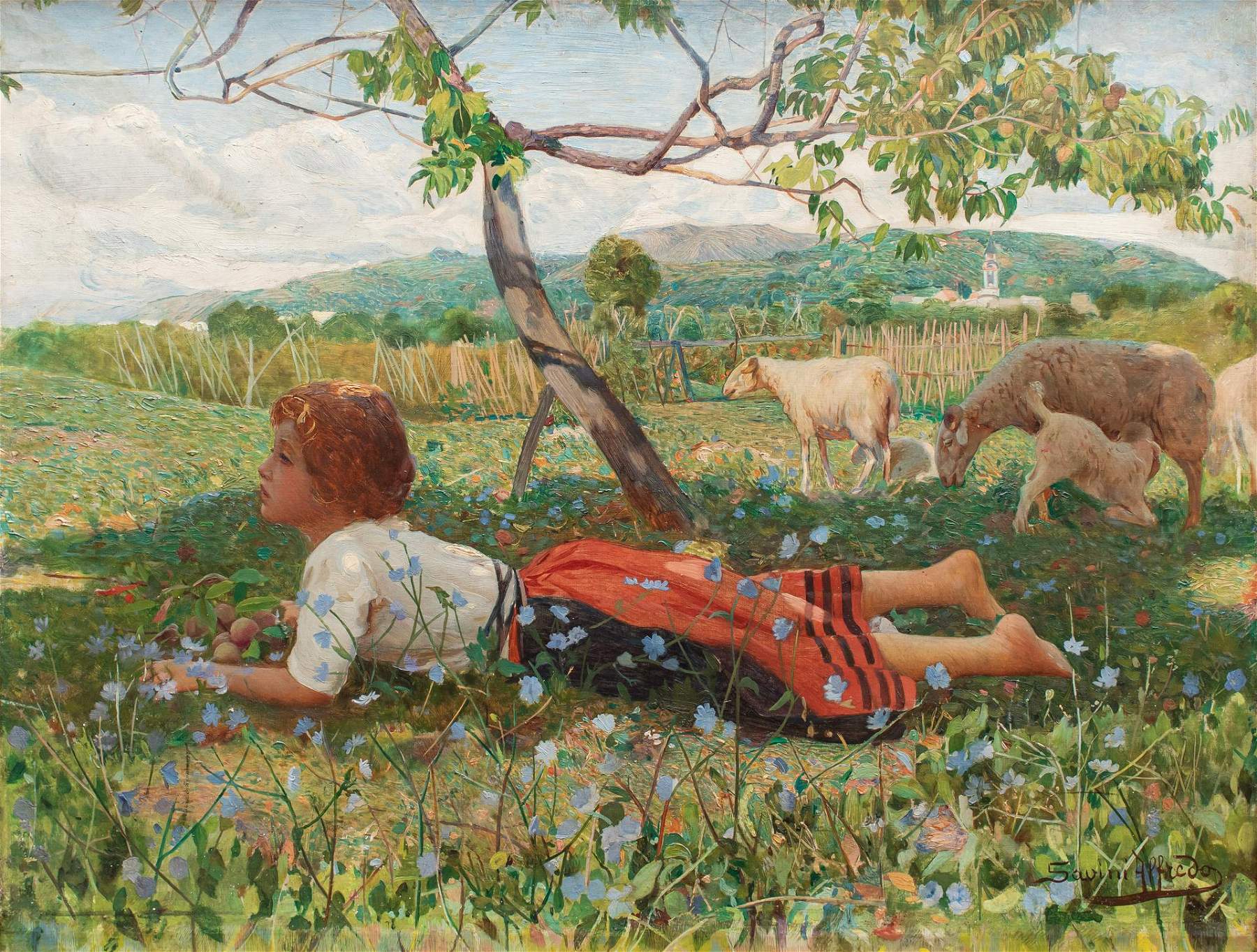 |
| Bologna, Museo Ottocento opens: a new museum on Bolognese painting of the 1800s and 1900s |
Warning: the translation into English of the original Italian article was created using automatic tools. We undertake to review all articles, but we do not guarantee the total absence of inaccuracies in the translation due to the program. You can find the original by clicking on the ITA button. If you find any mistake,please contact us.




























